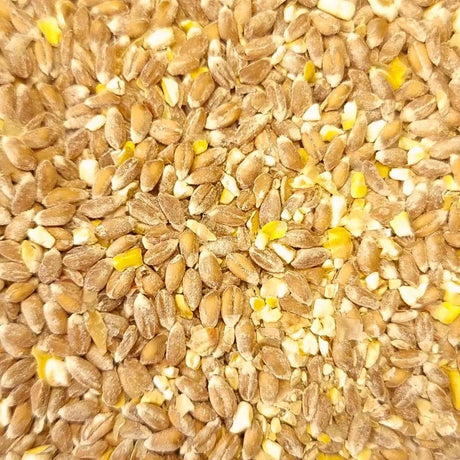Never heard of a skinny pig? Well, you're in for a real treat. These hairless cavies are proof that bald is definitely beautiful. And while they may fall short in the follicle department, they most definitely make up for it when it comes to their personalities!
In this article, we're looking at the top 10 reasons to love skinny pigs and how best to care for them.
Ready? Cue the 'aaaaah's', and let's get started.
10 Reasons To Love A Skinny Pig
1. Every skinny pig is unique
Just like their hairy cousins, no two skinny pigs look the same. Whether it's a tuft of ginger hair on their nose, a few grey whiskers on the chin or a few hairs on their feet, every hairless guinea pig is as unique as its owner.

2. Skinny pigs appreciate a good meal
There's no such thing as a pernickety skinny pig when it comes to food. And no matter your level of expertise in the kitchen, every meal you prepare will be well and truly appreciated by your hairless piggy. Remember that skinny pigs have a faster metabolism than regular cavies, so will need to be fed more.
3. Skinny pigs love cuddle time
Skinny pigs are always up for a cuddle. Treat them well, with lots of healthy food, plenty of space and one-on-one time, and they'll reward you with the best cuddles!
4. You can dress them up... or down
Skinny (or hairless) guinea pigs have very little to no hair on their bodies. Of course, they look super cute dressed down in their birthday suits but also look rather dapper in a specially chosen outfit. Because skinny pigs don't have hair, they must be kept warm.
Take a look at this little cutie ...
https://www.youtube.com/xJ_IHLlMZ3U
5. Skinny pigs talk.. a lot
What skinny pigs lack in hair, they make up for in talking. From loud wheeks and squeaks to purrs and whistles, hairless cavies make for great conversationalists.
6. Skinny pig, hippo or werewolf?
Skinny pigs come in various disguises. While an almost completely hairless piggy looks like a teeny tiny hippo, the hairier version is called a 'werewolf'. How cool is that?

7. The more, the merrier
One thing skinny pigs have in common with other guinea pig breeds is their love of socialising. To keep your naked piggy healthy, mentally and physically, it's best to keep two guinea pigs or more together.
8.Skinny pigs are lovers... not fighters
Unlike most guinea pigs, skinny pigs rarely get into fights over territory, toys or tasty treats. They are also less aggressive than their furry counterparts and prefer keeping the peace rather than fighting.
9.Less fluff... less ah-choo!
If you suffer from allergies, then a hairless guinea pig is the perfect pet for you. No fur means they are hypoallergenic and an excellent choice for animal lovers who suffer from allergies.
10.You'll be the talk of the town
Skinny pigs are relatively new to the pet market. This means if you're the lucky owner of one of these pocket pets, you'll be the talk of the town. Your skinny pig could even become an Instagram sensation, like charming little Ludwik over here.
Skinny Pig – The Ultimate Breed And Care Guide
At first glance, a skinny pig is simply a regular guinea pig without a onesie. On closer inspection, however, there are a few differences between skinnies and other piggies, other than just the way they look.
So, if you're the proud new parent of a hairless guinea pig or are maybe thinking about getting a new guinea pig (who isn't?), you need to find out everything there is to know about caring for these unusual cavies.
This section looks at how best to care for your skinny pig, from its enclosure and diet to grooming and handling it. But before we get to that, let's take a quick look at the breed.

The skinny pig breed came about in the 1970s and is a result of genetic mutation. Scientists experimented by breeding normal haired guinea pigs with a hairless strain, and the now popular skinny pig was born.
There are two types of hairless guinea pigs, namely the skinny pig and the Baldwin. The skinny pig has little tufts of fur on some parts of the body, while the Baldwin, as the name suggests, is entirely hairless.
Skinny pigs come in different colours like their furry cavy cousins, including chocolate, golden, lilac, cinnamon, silver and white. They also have distinct patterns such as Dutch, brindle and Himalayan.
Caring For Your Skinny Pig
Skinny pig cages
When choosing a cage for your skinny pigs, there are a few things you need to keep in mind. First and foremost, you need to make sure the cage is large enough for your hairless cavies. Because of their fast metabolism, they have a lot more energy than regular guinea pigs, so they need more space.
Avoid getting a cage with wire flooring as this will hurt their sensitive feet and could cause a rather nasty and painful condition known as bumblefoot. It's also essential that the enclosure doesn't have any sharp edges that can hurt your hairless piggy's sensitive skin.
Bedding
Without a fur coat, the kind of bedding you choose for your hairless guinea pig is of the utmost importance. We recommend fleece, cloth, paper or hay.
Pine or cedar shavings and straw should be avoided as these can injure your skinny pig or cause skin irritations.
No matter what bedding you use, remember to also add lots of hay. All piggies, hairy or otherwise, need soft hay to snuggle in.
Cage essentials
When it comes to your skinny pig's housing, what you put inside it is as essential as the size and the bedding you use. Food bowls, water bottles, nesting boxes and lots of toys are essential cage accessories to keep your piggy healthy, happy and stimulated.
Our list of cage essentials includes:
- A tip-proof food bowl - we recommend this bowl. Not only is it tip-proof, but it also helps control portion sizes.
- Water bottles are a much better option than bowls, which can be tipped over. We like this one, as it's gnaw and rust-resistant. Make sure you have a few placed around the cage, depending on how many skinny pigs you have.

- A hayrack - hay racks are great for keeping hay fresh and off the floor of the cage. Our absolute favourite is this wheek wagon.
- Hideouts - being prey animals, all guinea pig breeds need places where they can hide. Nesting boxes and shelters give your skinny pig somewhere to hide and get some time away from its cage mates.
- Toys and boredom busters - intelligent and curious little critters, skinny pigs need plenty of physical and mental stimulation. Always make sure there are things inside the cage to keep your piggy busy. Toys, including tunnels, tubes, chubes, wooden chew toys, and treat balls, are ideal.
Important - one-on-one time with your skinny pigs is vital. To help you keep playtime varied, take a look at 7 games you can play with your piggies.
Location
While your short and long-haired guinea pig breeds can live indoors or outside, hairless guinea pigs can only live in a relatively warm environment Without a fur coat, they cannot regulate their body temperatures and feel the cold a lot more than a hairy pig does.
They're also prone to overheat, so they must be kept in a room where the temperature stays between 18° and 23°C. Just like their hairy cavy cousins, skinny guinea pigs prefer a quieter environment, away from the hustle and bustle and noise.
Diet
Just like all other guinea pigs, skinny pigs need a healthy, balanced diet consisting of hay, pellets, fresh vegetables and fruit. And because all guinea pig breeds can't make their own vitamin C, you need to ensure they're getting enough of this essential vitamin from their pellets, veggies and supplements.
Remember that skinny pigs are not your average guinea pig, they have a faster metabolism, which means they need more food than typical short and long-haired breeds.
Let's take a look at what to feed your hairless guinea pig in a bit more detail.
Hay
Hay is an absolute must in a skinny pig's diet and should be available 24/7. Not only is this good for their digestion, but it also helps keep their teeth short.

Pellets
Another staple in a skinny pig's diet is pellets or nuggets. When deciding on the best product to feed your fur-free friends, look for high fibre pellets and contain protected vitamin C. Also, good quality guinea pig food should be fortified with essential vitamins and minerals, antioxidants and prebiotics.
To keep your guinea pig as healthy as possible and avoid health issues, it's best to avoid commercial pellets that contain seeds and nuts, animal by-products, corn products and fillers. Stay away from foods with added preservatives and artificial colours and flavours, as well as those with high sugar content.
Vegetables
Fresh veggies and Leafy greens that are rich in vitamin C should be included in your skinny pig's diet. Our top choices include:
- Spinach
- Kale
- Dandelion greens
- Turnip greens
- Parsley
- Romaine lettuce
Other tasty treats that provide skinny pigs with the nutrients they need include:
- Clover
- Chickweed
- Dandelions
- Grass
Important - when feeding any of the above to your skinny guinea pig, make sure it's free of any pesticides. Also, new growth is the most nutritious.
Fruits can also be included in your hairless guinea pig's diet. However, we recommend limiting these servings to once or twice a week, especially those that are high in sugar.
Fruits that can (and should be included) in your piggy's diet include:
- Apple
- Bananas
- Berries (blackberries, blueberries, cranberries, raspberries and strawberries)
- Pears
- Nectarines
- Papaya
- Watermelon
Read here for more information on your skinny piggy's diet, how to get it right, and what foods to avoid.
Grooming
Just like other guinea pig breeds, skinny pigs need to be groomed regularly. This includes clipping their nails, keeping an eye on their teeth and checking for any lumps and bumps.
With regards to their skin, a healthy diet is essential to keep it soft and moisturised. If your piggy's skin looks dry, you can use coconut or almond oil. Stay away from perfumed moisturisers as these can cause skin issues.
Skinny pigs do a good job keeping themselves clean, and bathing them too much can also cause skin problems. When you do give your skinny guinea pig a bath, make sure you use a pet-friendly shampoo that's suitable for their sensitive skin.
Handling your skinny pig
Skinny pigs are affectionate little pets that love cuddle time with their humans. But it's crucial that they feel comfortable with you before you try to handle them. A rescue guinea pig or a new addition to the family, for example, will need some time adjusting to its new environment.
Always use a soft voice around your skinny pigs, and don't sneak up on them. Scaring them will only make them nervous around you and limit your one-on-one cuddle time.
Need more information on how to pick up your skinny pig? This article tells you everything you need to know.
To Finish Off
Skinny pigs are affectionate and always up for a cuddle. Although they do require a bit more care when it comes to their sensitive skins, for the most part, these quirky little critters, like normal haired guinea pigs, make great small pets.
Are you the proud owner of a hairless guinea pig? We would love to hear all about it. And, of course, feel free to share photos in the comments below.










7 comments
You should definitely have a companion for it. Ours are so happy together and it’s definitely recommended.
Skinny guinea pigs, hairless wonders, radiate charm with their [unique, naked appearance](http://guineapigdiary.com). Their endearing vulnerability melts hearts, proving that true beauty transcends fur. These little companions redefine cuteness with their adorable, bald presence.
Say goodbye to complicated activation procedures and hello to effortless entertainment! Watch.spectrum.net/activate simplifies the process of setting up your Spectrum TV subscription, with easy-to-follow instructions that make activation a breeze. Just log in, follow our straightforward steps, and you’ll be enjoying the very best in television and movies. Our user-friendly guide ensures that everyone can access Spectrum’s vast selection of content without any fuss or hassle.
What do you mean ‘fixed’?
Appreciation for really being thoughtful and also for deciding on certain marvelous guides most people really want to be aware of.
how long do bearded dragons live?
Can bearded dragons eat grapes
I just got my first skinny pig. I have wanted one for a long time. I have always had regular ones and they have all been such a joy. By far my favorite small critter breed. I do love my rat too. I found a baby tortie at a local pet shop all alone and sad. He is white brown and tan. He is 4 weeks old and and spoke up at the shop when I went to the counter and asked for crickets. After I held him and bis response to me I knew he was coming home with me.
Question. Do you reccommend getting them fixed?
I have recently become the owner of two ex breeding skinny pigs, mother and daughter, called Ethel and Maude. I find they are more high maintenance than guinea pigs but I really love them. They have furry beds but I don’t understand why they wet in them and still lie in them??